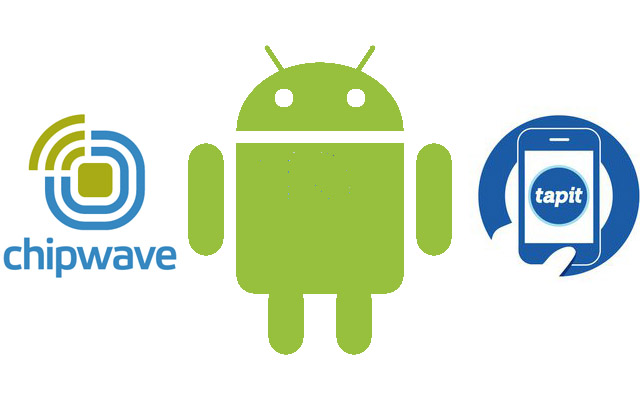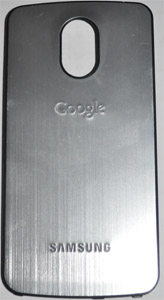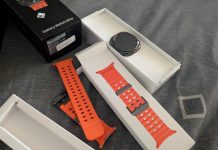
NFC is something that first appeared on the Android landscape with the Nexus S back in November 2010 when the handset was launched and then was continued in the Nexus line up with the Galaxy Nexus. NFC is also supposed to be included in a number of handsets which should be out this year including the LG Optimus Vu,3D Max, 4X HD and L5 & L7, the Sony Xperia S, P, Ion and Sola, the Samsung Galaxy Ace 2, Mini 2 and S Advance and most likely the Galaxy S III as well. Since Google Wallet has been based solely in the US and shown very slow progression and almost no moves to leave their shores, NFC has shown very little use except for automating functions in your life by programming NFC tags, this post will hopefully show you a little bit about how to go about doing that.
So for those of you who aren`t familiar, What is NFC? NFC is a radio based technology which allows for devices to enact transactions, data exchange, and simplified setup of hardware functions on your phone. This includes things like enabling Wifi or Bluetooth on your phone, sharing URLs or contact information or even paying for things such as shown with Google Wallet or the Visa Paywave or Mastercard PayPass contactless payment systems.
I’m a huge fan of NFC and what I can see it can do for us, to get myself started I purchased a trial pack of tags from the UK but found that they did not have enough memory they had around 50bytes of storage. Thanks to Scott who you know from our Podcast he organised a purchase of tags from Chipwave, we grabbed some Ultralight-C and Mifare 1K NFC tags. The 2 tags we got have a lot more memory than the ones I purchased :
- Mifare 1K – 752 bytes of usable storage (total capacity 1024 bytes)
- Ultralight C – 144 bytes of usable storage (total capacity 192 bytes)
So to add multiple functions to your NFC Tag you will need something along these lines, the tags we got from Chipwave were circular but they are sometimes square, there is no difference between them apart from the shape.

When purchasing tags it’s important to be aware of an issue that is affecting early versions of Ice Cream Sandwich on the Galaxy Nexus, anything below 4.0.3 seems to be affected and you will need to ensure that your tags are pre formatted to NDEF or you can run a custom ROM based on 4.0.3 such as AOKP. Chipwave have advised that they are happy to pre-format your NFC Tags so just let them know when ordering. I have had no issues with the Nexus S running Gingerbread but due to slow rollout of ICS to Nexus S I haven`t had a chance to test writing NFC Tags on ICS on the Nexus S as yet.
Note that aftermarket battery covers made out of metal do hamper the NFC chips, in that they appear to block the signal. Also be aware that your NFC chips is actually in the battery so if you have an aftermarket battery it may not have an NFC chip in it.

As a special deal to Ausdroid readers, Chipwave has kindly offered a 10% discount on orders if you use the code ‘ausdroid’. Remember if you are worried about your tags not working due to the NDEF issue, you can ask them to pre-format them.
In terms of software there are a number of different applications available in the Google Play Store, I`ve Chosen 3 to give you a quick look through via video walkthroughs:
NFC Task Launcher
You can grab the NFC Task Launcher app from the Play Store for $1.85, the flip side is, in order for people to execute the tags created with the full version they`ll need to grab NFC Task Launcher which is free. Of the three applications i’ve looked at this one has been the most comprehensive offering the ability to combine multiple actions into one tag.
NFC Quick Actions
NFC Quick Actions is available form the Google Play Store as well for free and if you like it there is an option to purchase a Donate version. This app is in my opinion a better looking app but has the drawback that I could find no way to add more than one action to an NFC Tag.
NFC Tag Writer by NXP
NFC Tag Writer by NXP is again available from the Google Play Store and has a companion app which is essentially an NFC Reader NFC Tag Info by NXP, it allows you to read NFC Tags and
Scott has utilised one of the options in NFC Task Launcher and paired it with the Tasker app from the Google Play Store for $5.99, this enables him to setup all his actions in Tasker and then simply write a command in NFC Task Launcher which launches that action in Taskern.
Suggestions for using NFC Tags
I’ve currently programmed 3 tags :
- 1 at work which I have stuck in the window which toggles the Wifi Hotspost on my Galaxy Nexus
- 1 at home which performs a FourSquare Checkin at my house then enables Wifi and attaches to my home Wifi SSID
- 1 beside my bed which toggles between two profiles. The first profile is for before I work which sets an alarm, mutes all volumes except alarm and disables the notification LED. The second profile is for days off which just mutes all volumes, and disables the notification LED.
Scott :
I have several tags setup around the place. Each tag has 2 profiles on it. So the first tap on the tag sets the first profile and the next time i tap on the tag the second profile is set. eg. i have one that I tap when I get home that starts a tasker task which: lowers notifcation, system, media and ringer volumes (all independently and all to different levels), turns wifi on which automatically connects to my wifi, turns BT off (not a toggle but off) in case I forgot to turn it off and data on in case it was off, and then I have it say “welcome home” (just so I know which profile I have started.
The other profile on that tag is one I call “Not Home” which basically turns all volumes up, data on, wifi off, BT off and then says “Not home”.
I have another tag in the car which the first profile changes volumes down a bit but turns BT on and connects it to my car stereo and opens Google music and says “In the car”, the second profile on this tag is the “Not home” profile from previously.
Other things you can have it do is run apps- eg. I have one next to my kitchen light switch for when I go to bed – turns WIFI off, BT off, data off, all volumes down to nearly zero but keeps ringer volume at a hearable level in case work calls, it also turns my LED flashlight on using TeslaLED, and then opens the alarm app to remind me to set the alarm for what time I want.
I have tags in several other places but they all basically do a variation of the above…
Tapit
Whilst researching NFC Tags, I spoke with Tapit who kindly supplied some of their tags as well as allowed us access to their configuration system. What we found was that from a commercial point of view their setup is fantastic, whereas tags created with NFC Task Launcher requires an app to read and execute the command the NFC Tags they utilise are pre-programmed to access their database and execute the command stored on the server.
They are a fantastic option for businesses, they allow a lot more functionality and allow for people to have NFC functions without doing the above, it also allows for analytics so you can keep track of the location of the tag, how many times it has been used and also change the function of the tag without having to have physical access to the tag. You can check out their shop which currently has a $15 a month option to allow users to tap an NFC Tag and follow you on Twitter or do a Facebook check-in with one tap. They look to be adding more plans with different options in the future.
So hopefully this information has shown some of the things you can do with NFC and also cleared up a few questions on it. Scott and I are both on Twitter and willing to answer questions on how to use or program NFC tags. Feel free to hit us up in the comments as well and we will try to keep an eye on the post to help out where we can.



